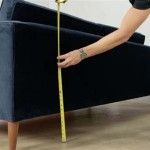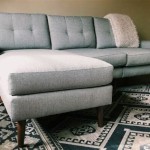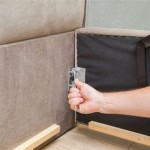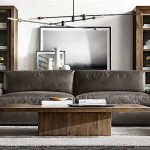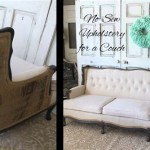Sideboard Behind Sofa: A Versatile Design Solution
Positioning a sideboard behind a sofa is a popular interior design strategy that offers both aesthetic and practical benefits. This configuration maximizes space utilization, particularly in smaller rooms, while adding an element of visual interest and organization to the living area. A sideboard in this location provides a functional surface and valuable storage, elevating the overall design scheme.
One of the key advantages of placing a sideboard behind a sofa is the creation of a visual anchor. A sofa, often the largest piece of furniture in a living room, can sometimes appear adrift within the space. A sideboard provides a grounding element, visually connecting the sofa to the wall and creating a more defined and cohesive layout. This is especially useful in open-plan living areas where defining zones is essential.
The added surface area offered by a sideboard is invaluable. It serves as a platform for displaying decorative items such as lamps, vases, artwork, and family photos. This creates a personalized display area that reflects the homeowner's style and adds personality to the room. The surface also provides a practical space for placing drinks, books, or remotes, keeping them readily accessible yet neatly organized.
Storage is another significant advantage. Sideboards typically offer a combination of drawers and cupboards, providing ample space for storing items like blankets, cushions, board games, and other living room essentials. This concealed storage helps maintain a clutter-free environment, contributing to a sense of calm and order within the room.
The choice of sideboard style plays a critical role in the overall aesthetic. For a contemporary look, a sleek, low-profile sideboard with clean lines and a minimalist design works well. A more traditional setting might benefit from a sideboard with ornate details, carved wood, or metal accents. Matching the sideboard's style to the existing décor ensures a harmonious and cohesive look throughout the living area.
The height of the sideboard is an important consideration. Ideally, the sideboard should be slightly lower than the back of the sofa. This prevents the sideboard from visually overwhelming the sofa and allows the decorative items displayed on its surface to be easily seen. A height difference of a few inches is typically sufficient to achieve this balance.
Lighting can further enhance the functionality and aesthetic appeal of a sideboard behind a sofa. Placing a table lamp on either end of the sideboard provides focused light for reading or other activities. Alternatively, a statement pendant light hung above the sideboard can create a dramatic focal point and draw attention to the display area.
The space between the sofa and the sideboard should also be considered. Leaving a small gap allows for easy access to electrical outlets and facilitates cleaning. However, pushing the sofa directly against the sideboard can create a more intimate and cozy feel, particularly in smaller rooms where maximizing space is a priority.
The color and material of the sideboard can be used to complement or contrast with the sofa and other furniture in the room. A sideboard in a contrasting color can add a pop of visual interest, while a sideboard in a complementary color can create a more unified and harmonious look. The material of the sideboard, whether it be wood, metal, or glass, also contributes to the overall aesthetic.
When choosing a sideboard, consider its functionality and how it will be used. If the primary purpose is storage, then a sideboard with ample drawers and cupboards is ideal. If the focus is on display, then a sideboard with a larger surface area and open shelving might be more appropriate.
Integrating a sideboard behind a sofa is a versatile design solution that can enhance both the functionality and aesthetics of a living space. By carefully considering the size, style, and placement of the sideboard, one can create a well-organized and visually appealing living area that maximizes space and reflects personal style.
Beyond its practical benefits, the sideboard-behind-sofa arrangement provides an opportunity to express individual taste and create a personalized focal point within the living room. The careful selection of décor items for display on the sideboard allows for a curated presentation that reflects the homeowners' interests and adds a layer of personality to the space.
The sideboard-behind-sofa configuration is adaptable to various design styles, from minimalist to maximalist. By choosing a sideboard that complements the existing furniture and décor, one can seamlessly integrate this design element into any living room aesthetic.
The strategic use of accessories can further enhance the visual appeal of this arrangement. A large mirror placed above the sideboard can create an illusion of spaciousness and reflect light, brightening the room. Adding greenery, such as potted plants or fresh flowers, can bring a touch of nature indoors and create a more inviting atmosphere.

Neutral Living Room Condo With Antique Sideboard Eclectic Interior

Stylish Sideboards For Every Budget Taste And Room Sofa Table Decor Console Behind Couch

Here S How To Decorate Behind A Couch 10 Ideas Inspire

16 Long Sofa Tables To Go Behind The Couch Chrissy Marie Blog

Alisa Lysandra On Instagram Can You Place A Buffet Behind The Sofa Yes Indeed It Serves As Great Room Divider Wohimmereinrichtung Wohnung Wohnen

Byblight Turrella 70 9 In Brown 35 8 Height Rectangle Wood Console Sofa Extra Long Behind Couch Table With 3 Shelf Bb Jw0314xf The Home Depot

How To Style A Console Table Behind Couch 4 Ways

Decoration Behind The Sofa Sideboards Countertops

Tribesigns 70 9 Inch Extra Long Sofa Table Behind Couch Industrial Entry Console For Hallway Entryway Brown Com

How To Style A Console Table Behind Couch 4 Ways



